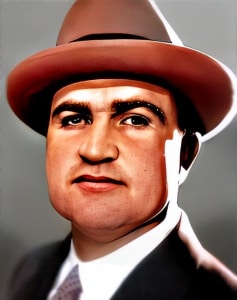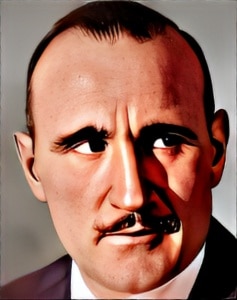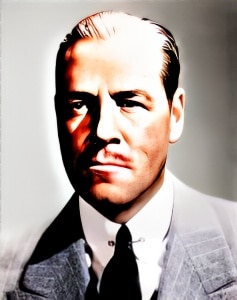 Edward Francis Cline, known as Eddie Cline, was a multifaceted talent in the early days of Hollywood.
Edward Francis Cline, known as Eddie Cline, was a multifaceted talent in the early days of Hollywood.
Born on November 4, 1891, in Kenosha, Wisconsin, Cline’s career spanned multiple decades and encompassed various roles, including actor, writer, director, and comedian. His contributions to the film industry helped shape the comedy genre and made a lasting impact on the world of cinema. One of his notable roles, though lesser-known, was as the hangman in the silent film “ Convict 13” (1920), where his comedic talent and timing shone through.
Cline’s journey in the entertainment industry began as an actor in silent films, where he often portrayed comedic characters. His on-screen presence and knack for physical comedy quickly gained recognition, paving the way for his transition into writing and directing.
A pivotal moment in Cline’s career was his collaboration with the legendary comedian Buster Keaton. Their partnership led to the creation of several iconic silent comedy films, including “The Navigator” (1924) and “Seven Chances” (1925). Cline’s expertise as a director complemented Keaton’s comedic genius, resulting in the production of some of the most beloved comedies in silent film history.
One of their collaborative efforts was “ Convict 13.” In the film, Cline took on the role of the hangman, a character whose appearance is both comical and integral to the story’s absurd and chaotic narrative. As the hangman, Cline displayed his gift for physical comedy, which blended seamlessly with Keaton’s own comedic style.
“ Convict 13” tells the story of a golfer (played by Keaton) who, through a series of mishaps, ends up mistakenly identified as a dangerous criminal and is sent to a prison. The hangman’s appearance occurs during a prison escape sequence, where Cline’s character inadvertently gets involved in the unfolding chaos. His physical interactions with Keaton and the other characters add a layer of humor to the film.
Cline’s portrayal of the hangman in “ Convict 13” exemplifies his ability to infuse humor into even the most unexpected situations. His character’s actions, combined with Keaton’s brilliant gags and stunts, contribute to the film’s enduring charm and hilarity.
Beyond his role as the hangman in “ Convict 13,” Cline’s directorial style was known for its attention to detail and inventive use of visual gags. His collaborations with Keaton, including “The Navigator” and “Seven Chances,” showcased their shared understanding of visual humor, physical gags, and precise timing.
Edward F. Cline’s contributions to early Hollywood cinema left an indelible mark on the world of film. His collaborations with Buster Keaton, including the enduring classic “ Convict 13,” remain iconic examples of silent comedy at its finest. Cline’s work is celebrated not only for its timelessness but also for its influence on subsequent generations of filmmakers and comedians.
After a long and fruitful career, Edward F. Cline passed away on May 22, 1961. His legacy as a multifaceted talent in the early days of Hollywood continues to be cherished by film enthusiasts and historians. His ability to blend humor with visual storytelling and his mastery of physical comedy have left an enduring impact on the art of filmmaking.




